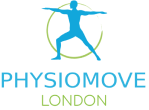Whether you realise it or not, working in an office environment and using the technology within it can wreak havoc on your body. When you’re tied to a desk for several hours a day, it’s difficult to avoid falling in to bad habits – bad posture, long periods without a break, staring at your screen for too long and cradling your phone to keep those hands free.
But without the correct desk set up, you could be putting yourself at risk from chronic pain, musculo-skeletal disorders and back and neck pain, which can result in long term health problems and a decrease in productivity in the workplace.
However, with just a few simple steps, you can greatly reduce the risk of suffering from these problems.
Put your computer screen at eye level
To avoid slouching forward over your desk to get closer to your screen, simply move the computer closer to you and to eye level. This will encourage you to improve your posture by sitting upright, avoiding unnecessary pressure on the neck, shoulders and back, as well as putting less strain on the eyes from staring too closely at the screen.
Have the keyboard right in front of you
You should have your keyboard in a position which allows your arms to be in an ‘L’ shape – your upper arms vertical down by your sides and your lower arm and hands horizontal, with a slight bend in the wrists. Whilst typing, your arms should stay close to your body and you wrists be straight. The mouse should also be placed right next to the keyboard so you don’t have to lean and stretch to use it.
Adjust your chair
You should position your chair so that your feet are flat on the floor (or flat on a footrest if you need to use one) and your thighs are parallel to the floor. Choose a chair that supports your back by changing the height or tilt, or alternatively use a back support to mold to the shape of your back to naturally improve your posture.
Hold your phone correctly
When you’re trying your best to multitask during a phone call, it’s easy to forget about posture. But cradling your phone between your ear and shoulder can lead to pain. It’s important to hold the phone in your hand and sit up straight to avoid neck strain or use a headphone to keep your hands free.
Take regular breaks
Taking regular breaks can be one of the most important things you can do to avoid desk related pain. Not only does it give your eyes a break from the screen, but it also gets your muscles and joints moving, helping to avoid stiffening up. So no matter how busy you are, take five for yourself!
If you do suffer from pain related to your workstation layout, physiotherapy can help by using a variety of techniques to check your posture and assess what needs changing to realign your body, as well as providing a series of exercises to alleviate the specific pain you are experiencing.
However, it is equally important getting your workstation assessed by an ergonomics specialist, like our friends at Ergonix. The assessments, which are tailored to each individual’s needs, are carried out by chartered physiotherapists with specialist training in ergonomics and assessing work environment, their posture and any problems he or she may be experiencing as a result. They will suggest changes to implement to reduce the risk of problems being faced.
Putting these steps in place should ensure that you have a comfortable, productive working environment, free from pain, discomfort and work-related health problems – something we should all be aiming for!


